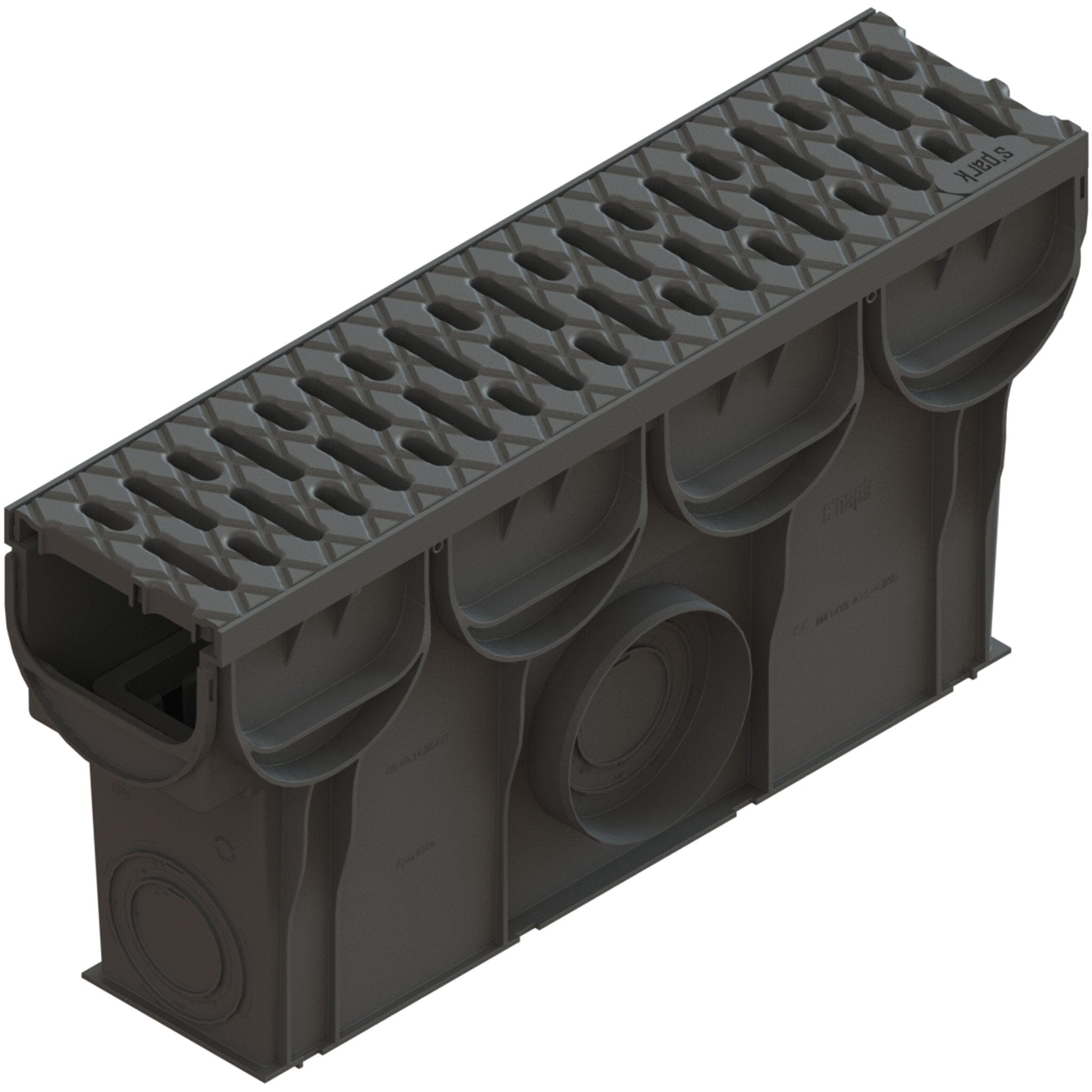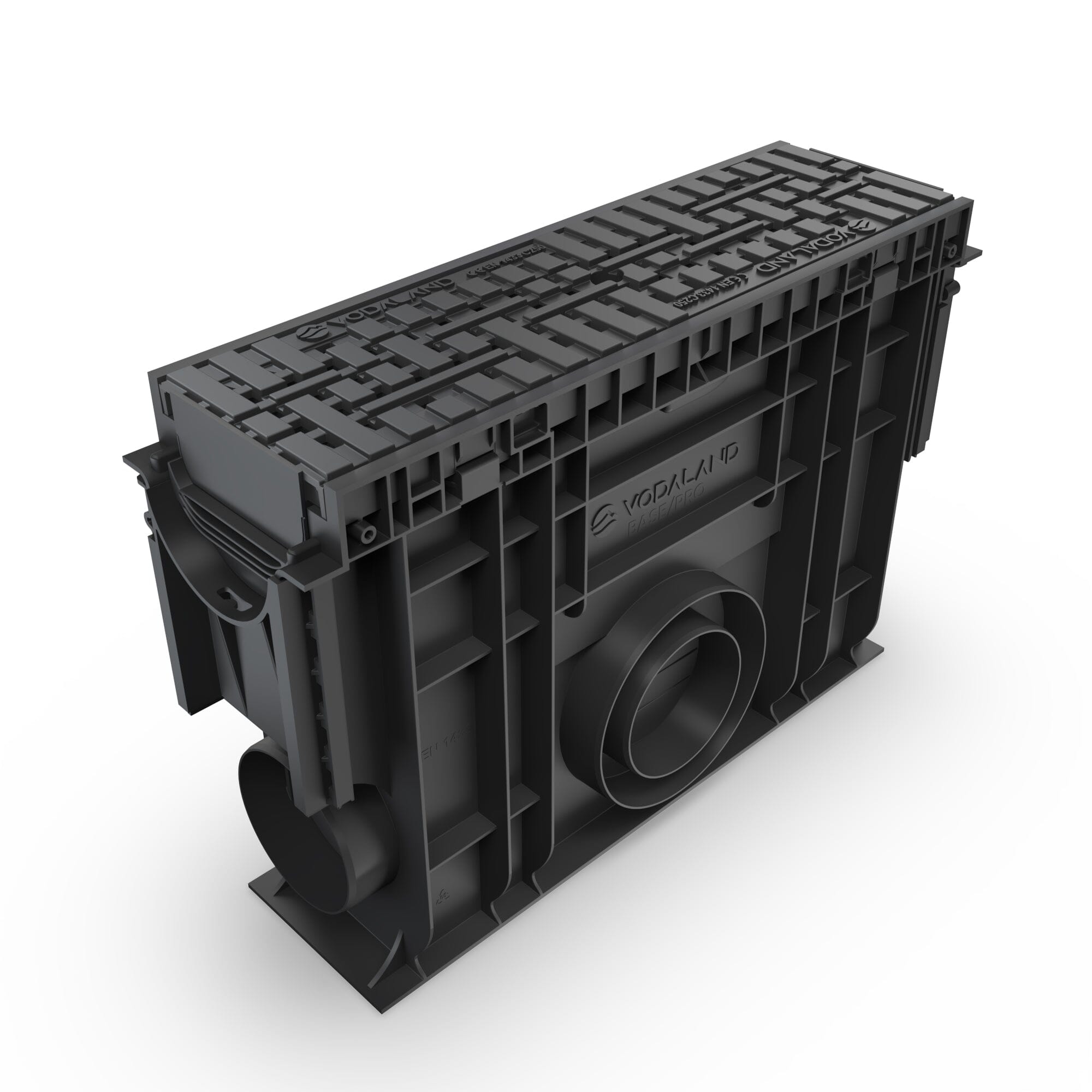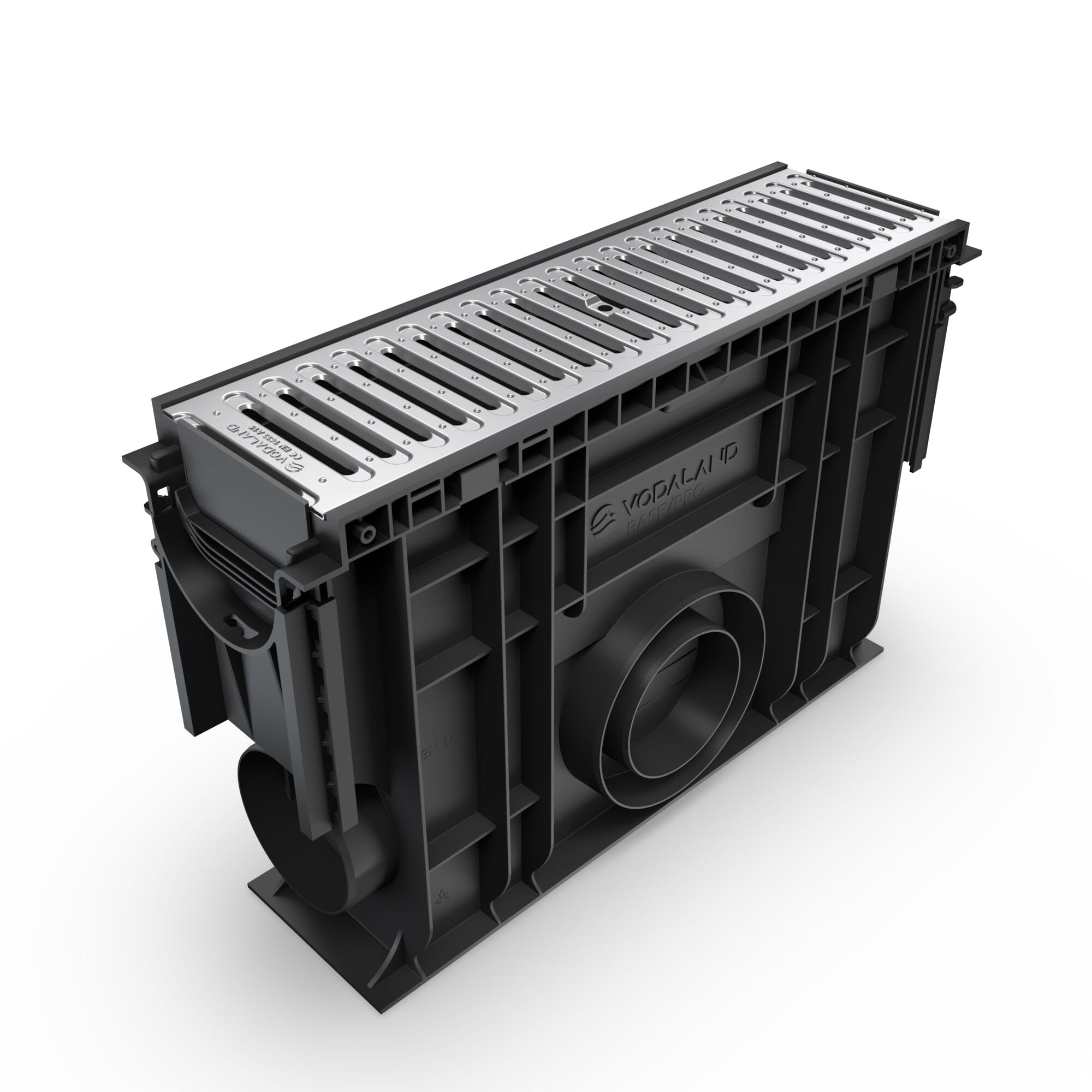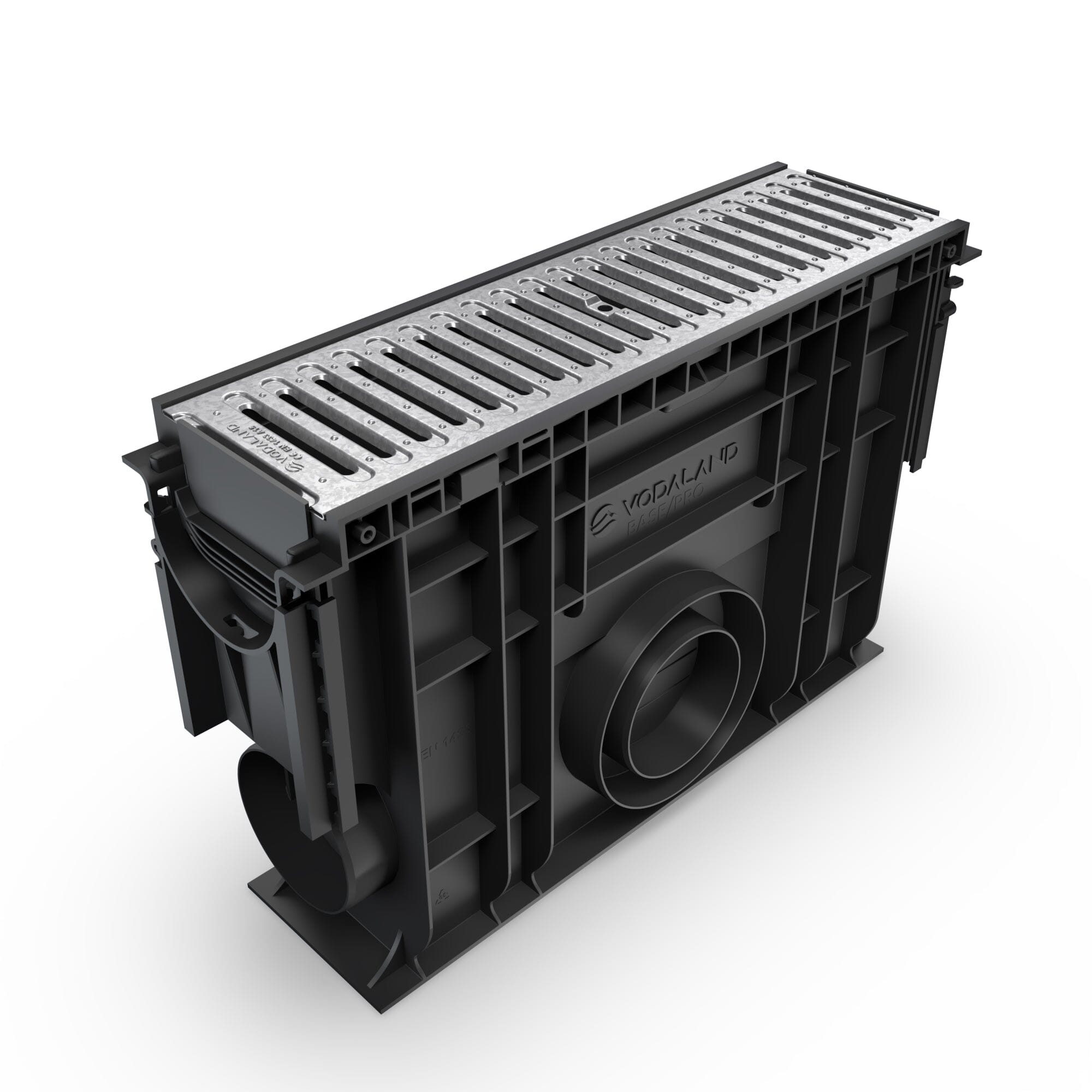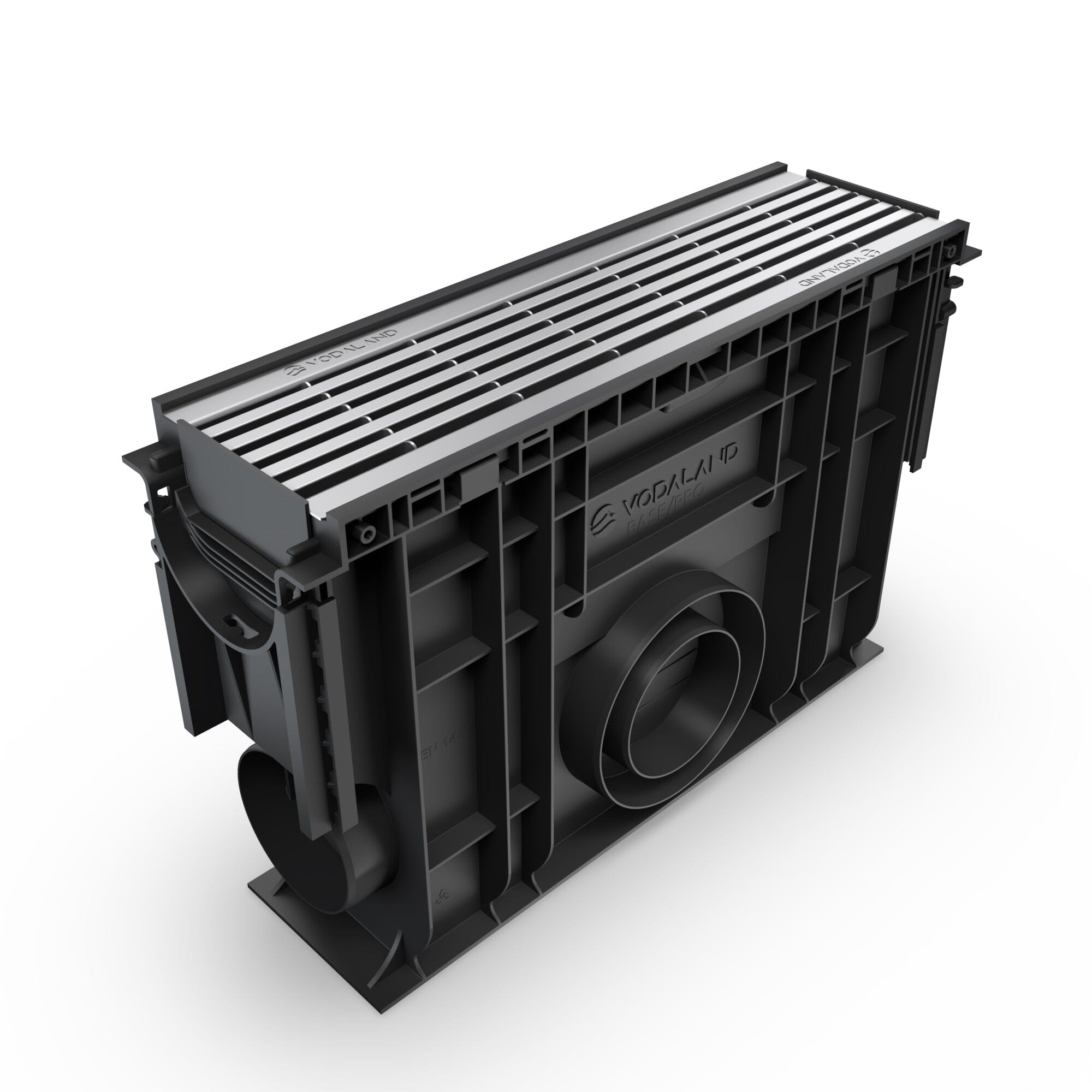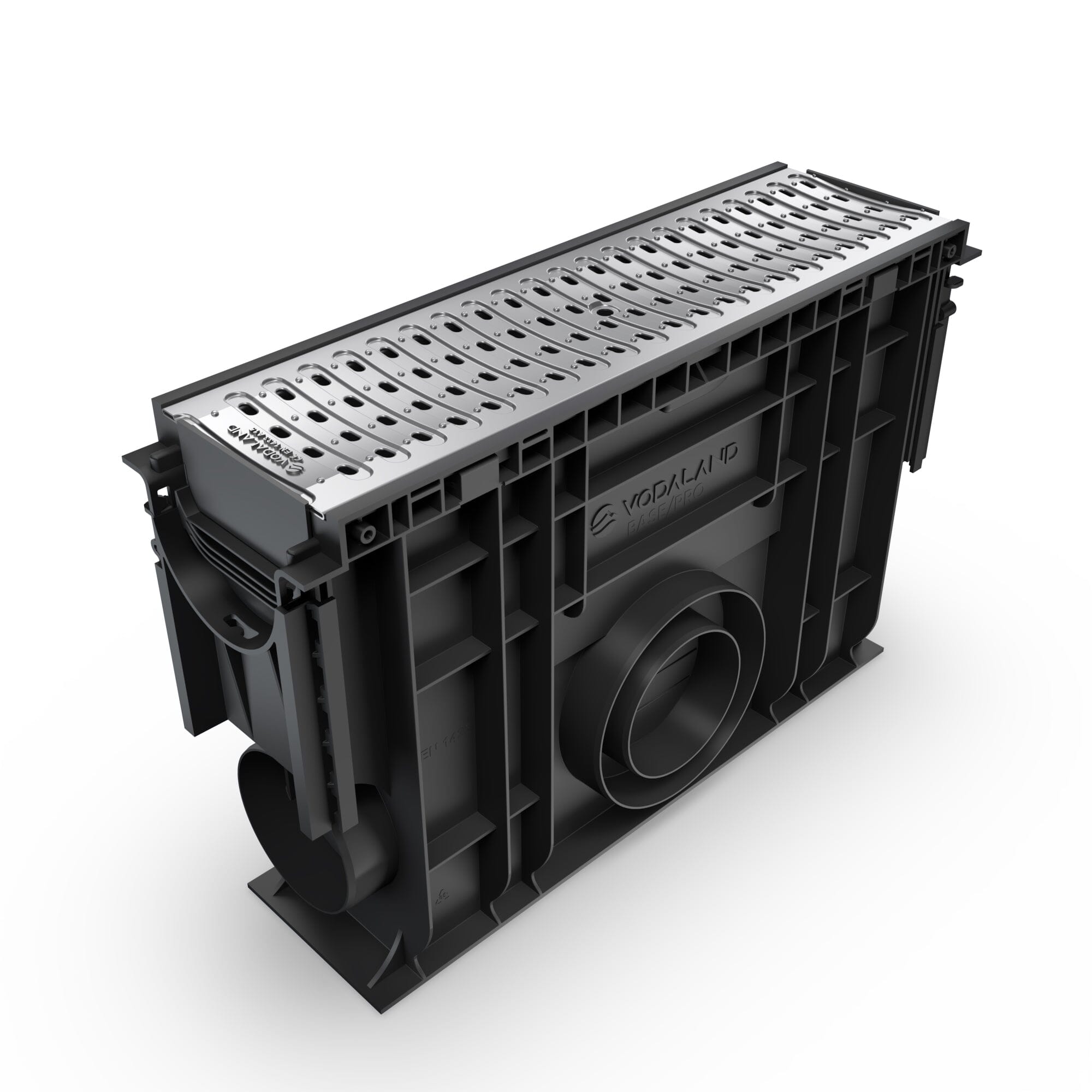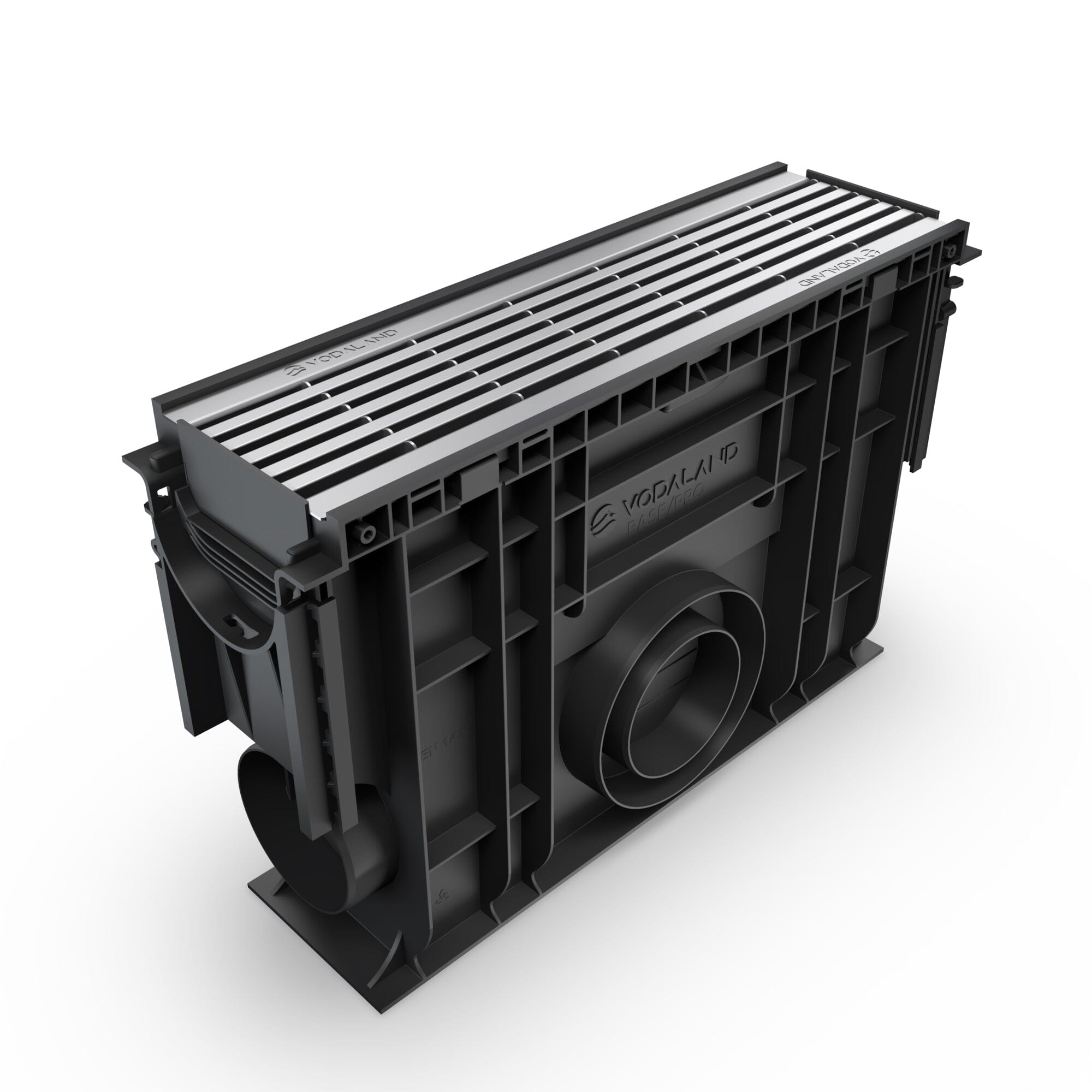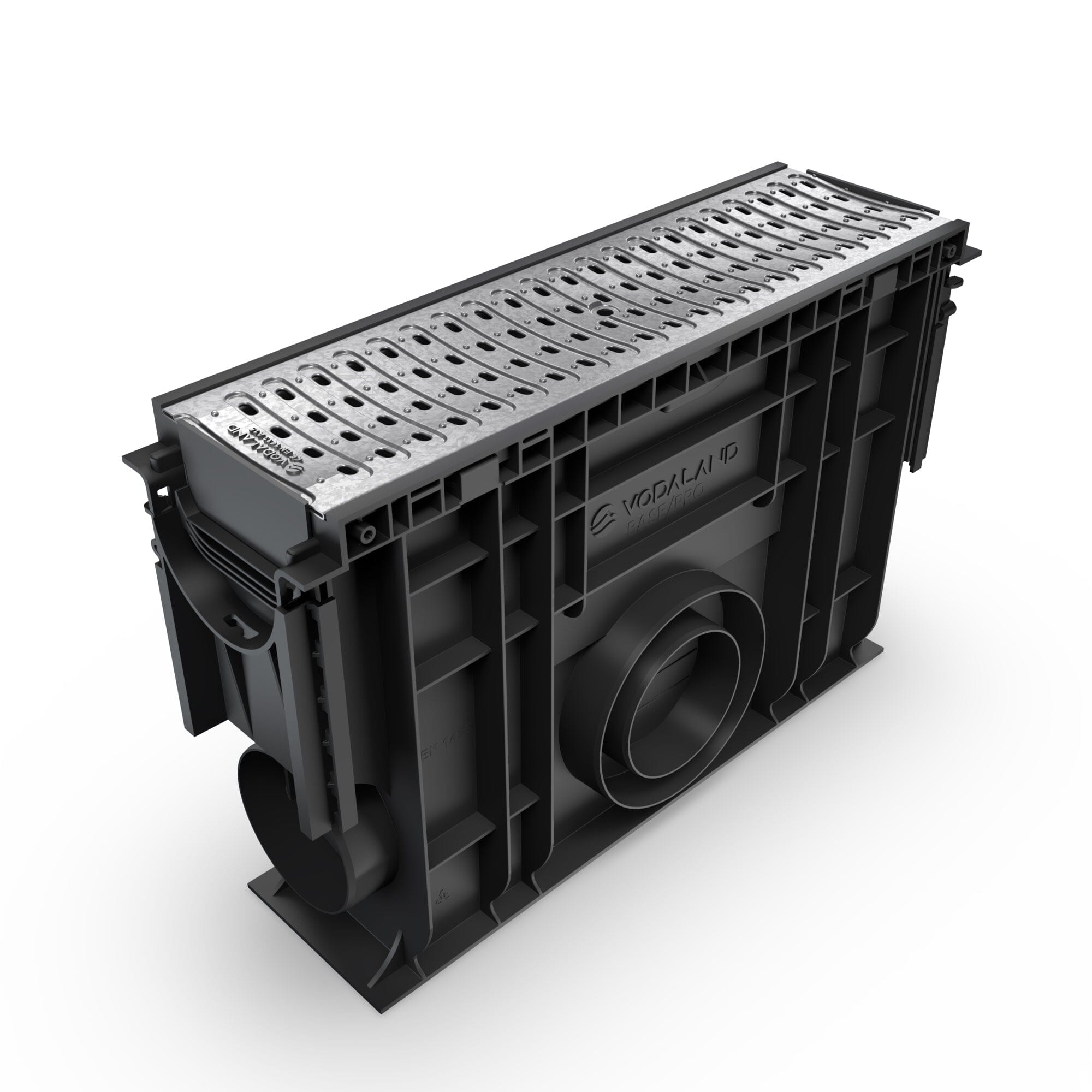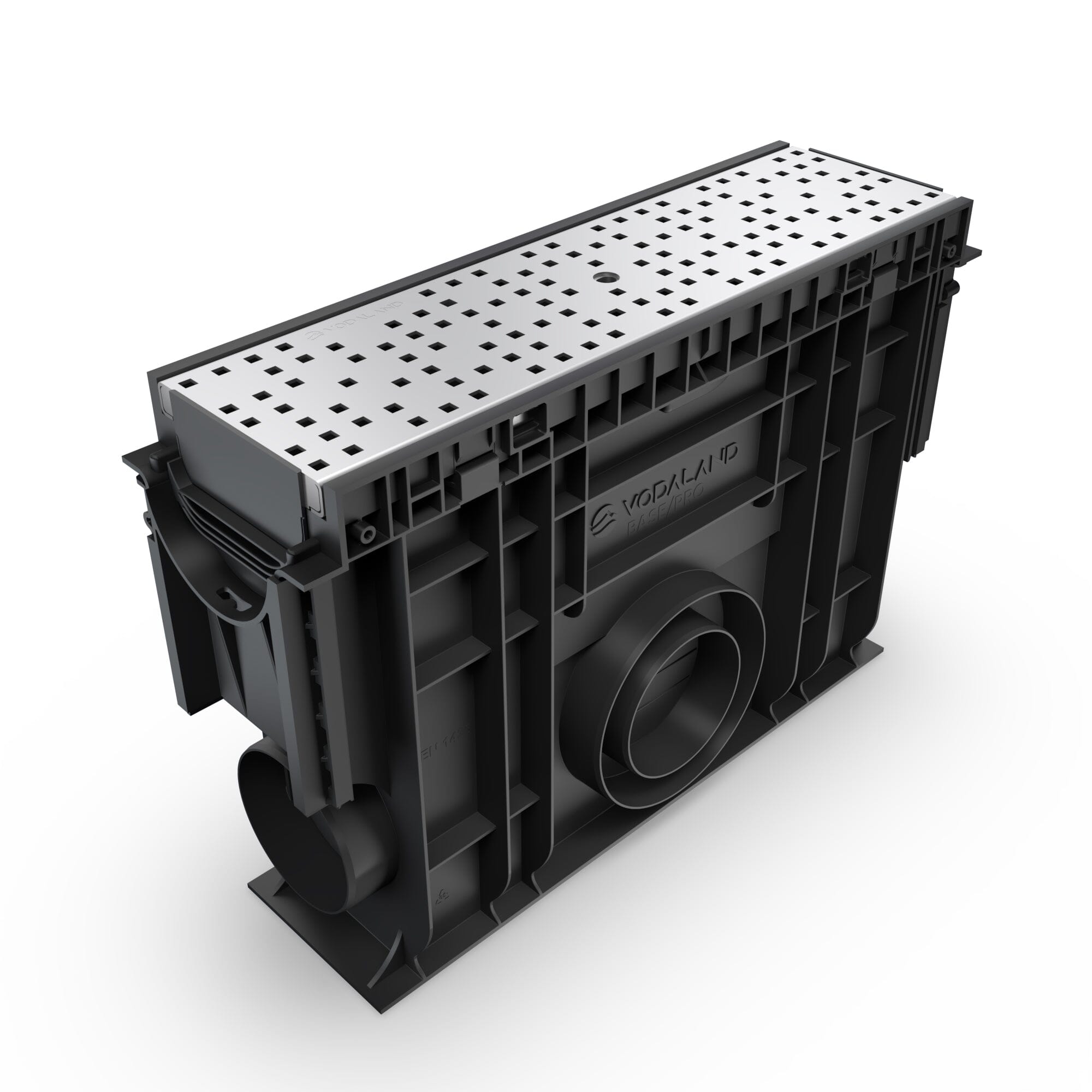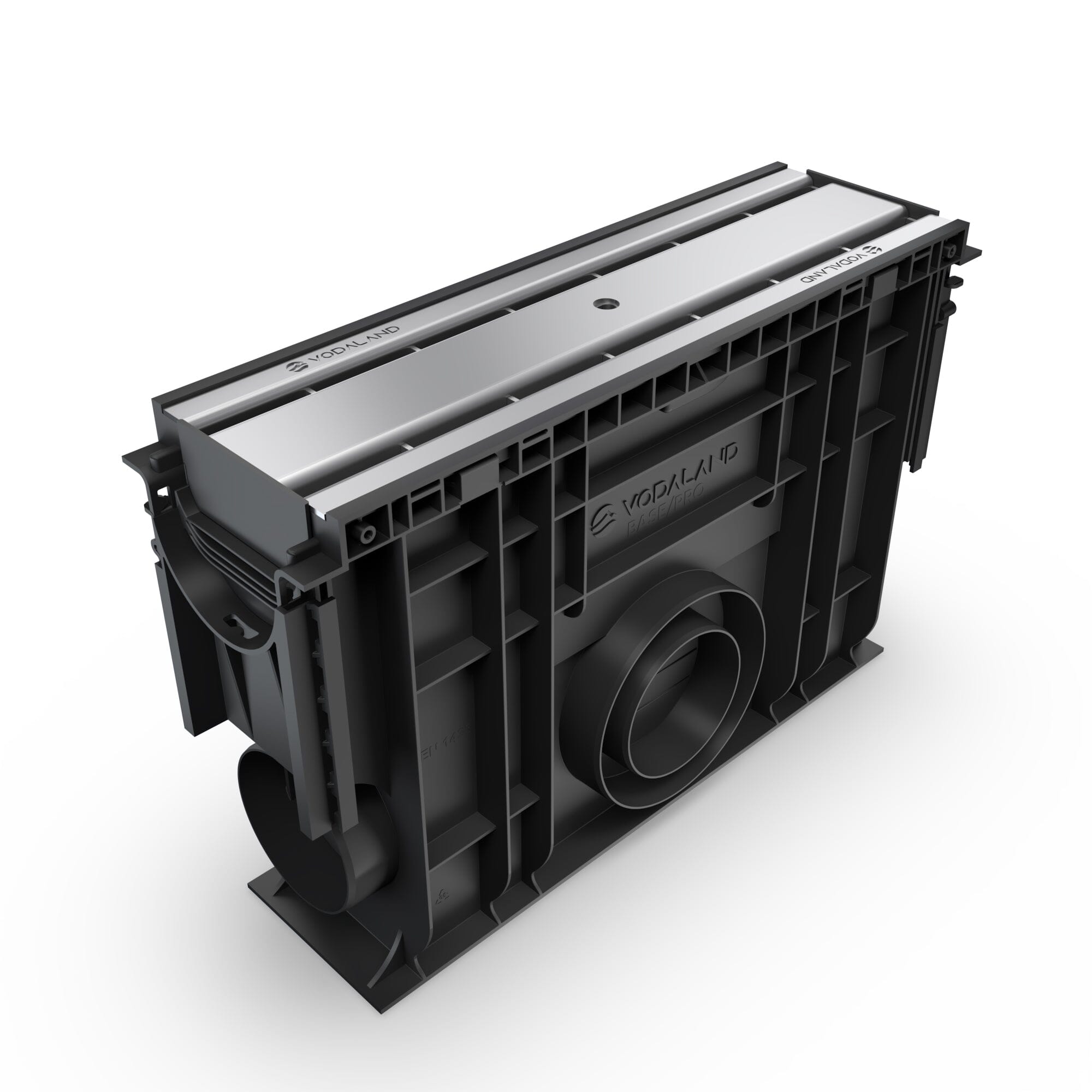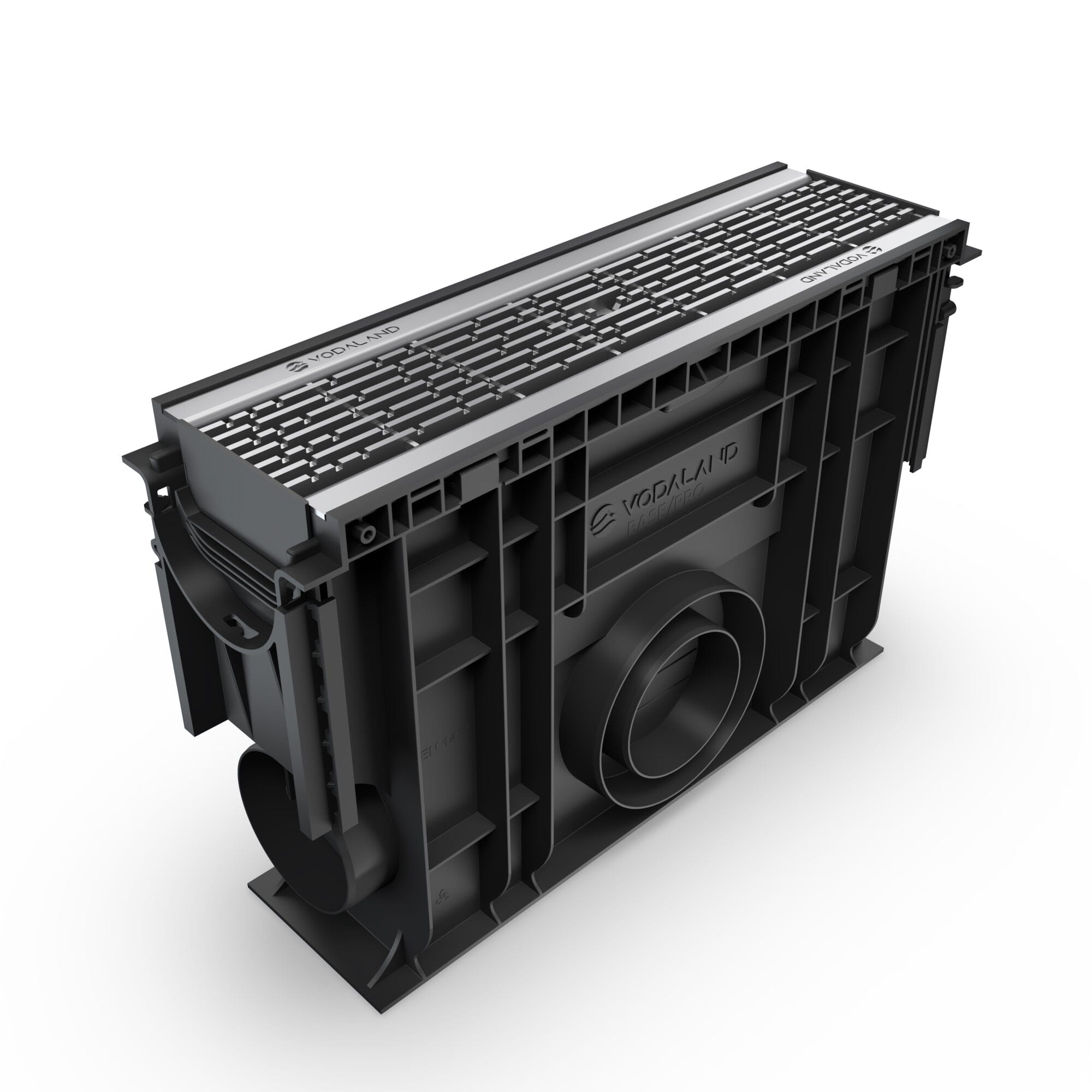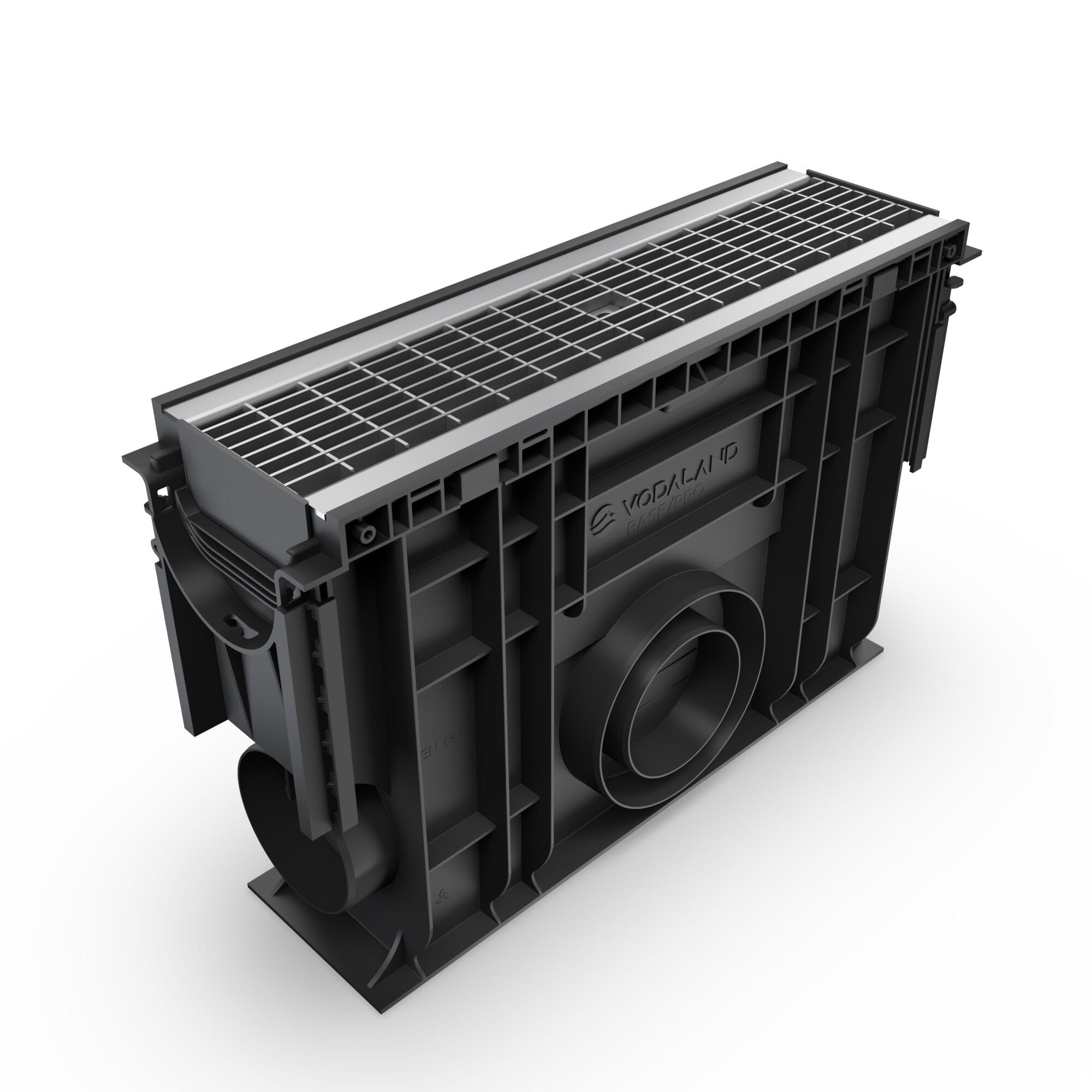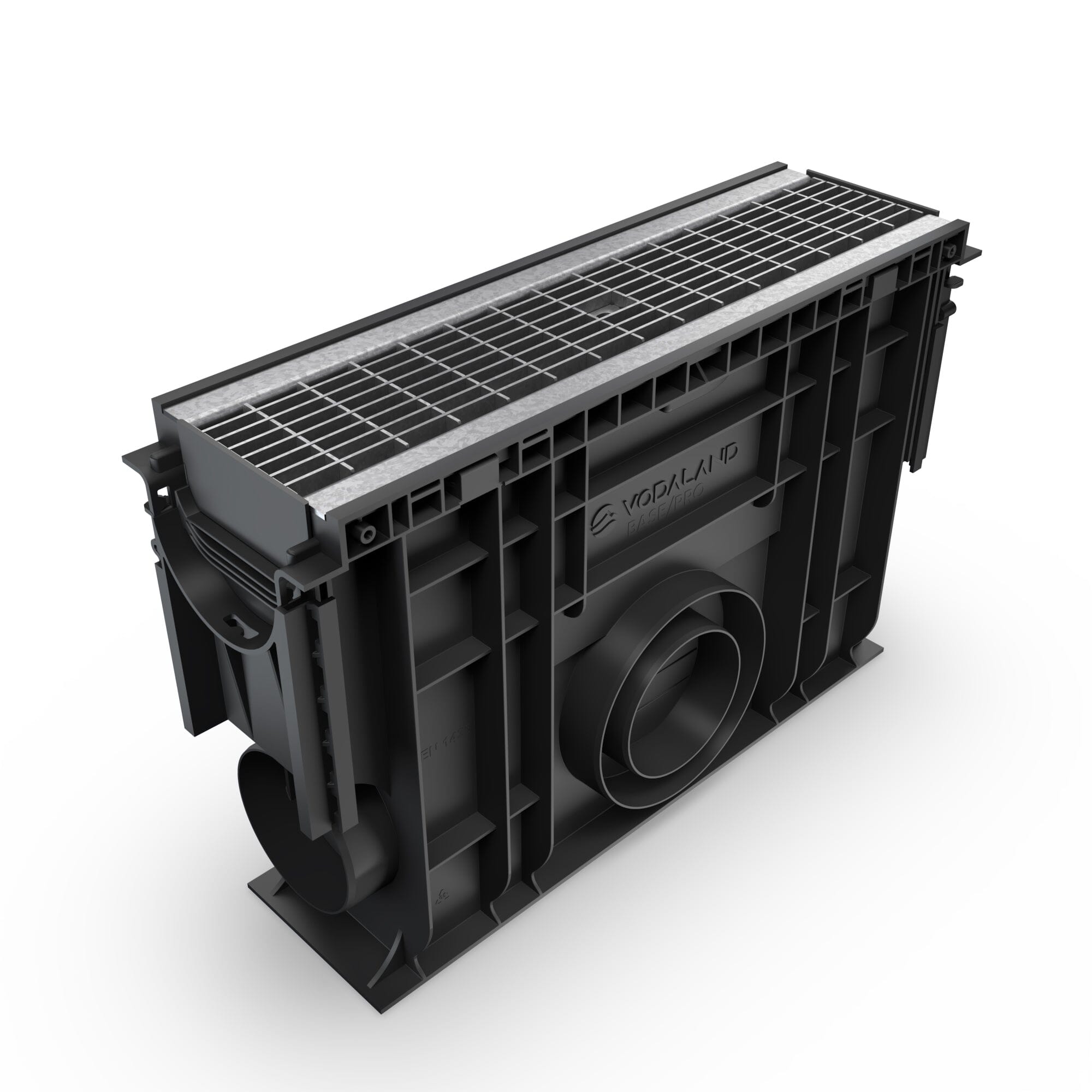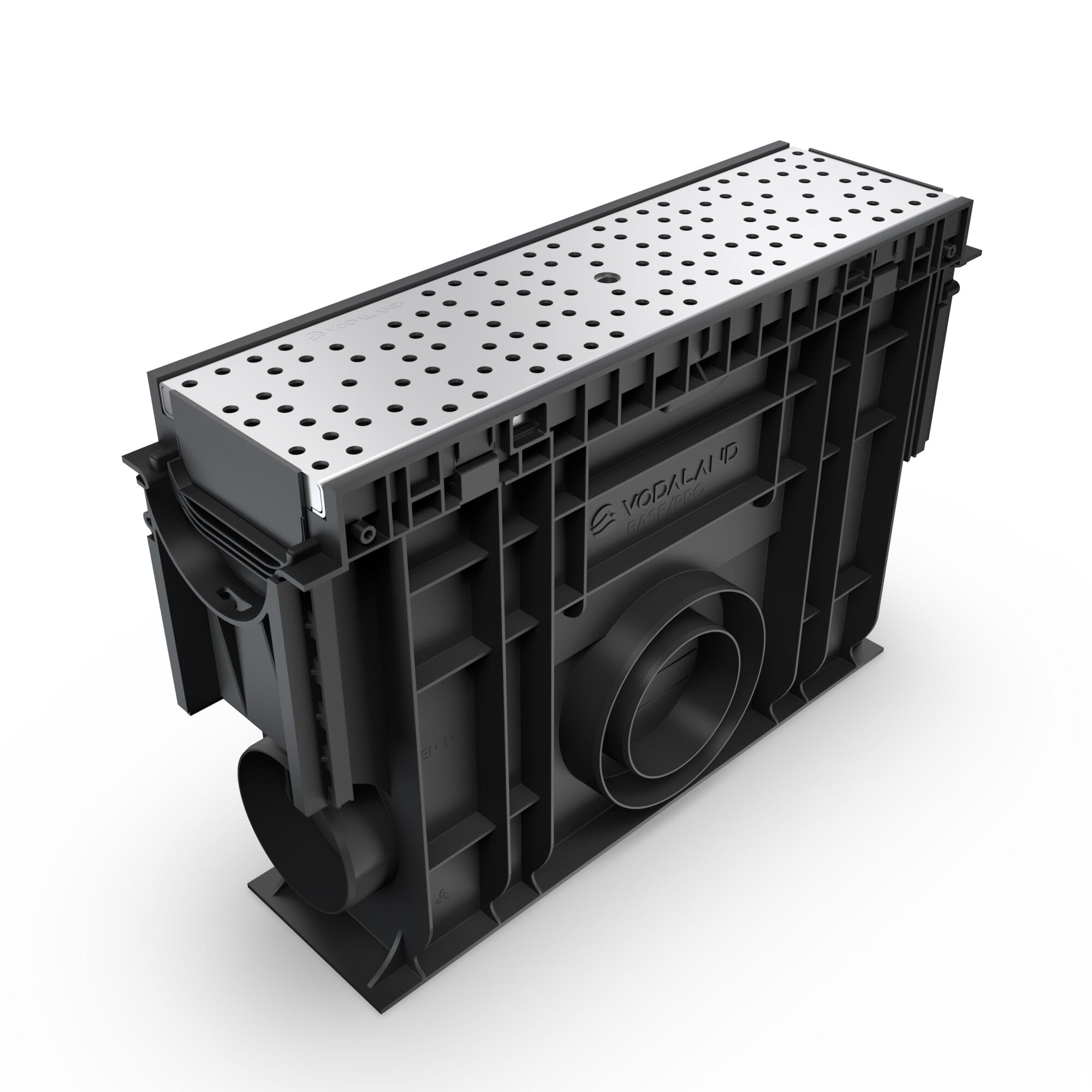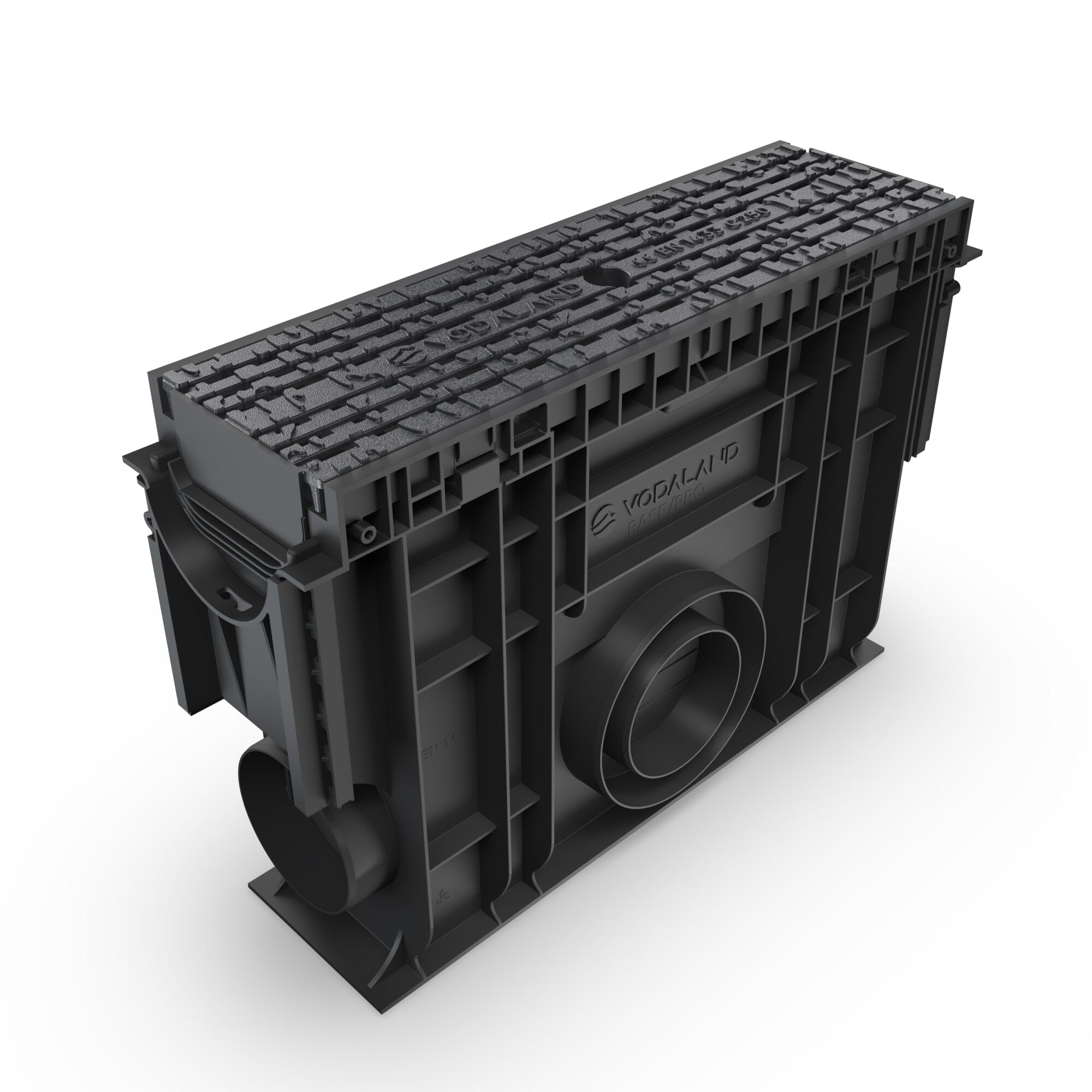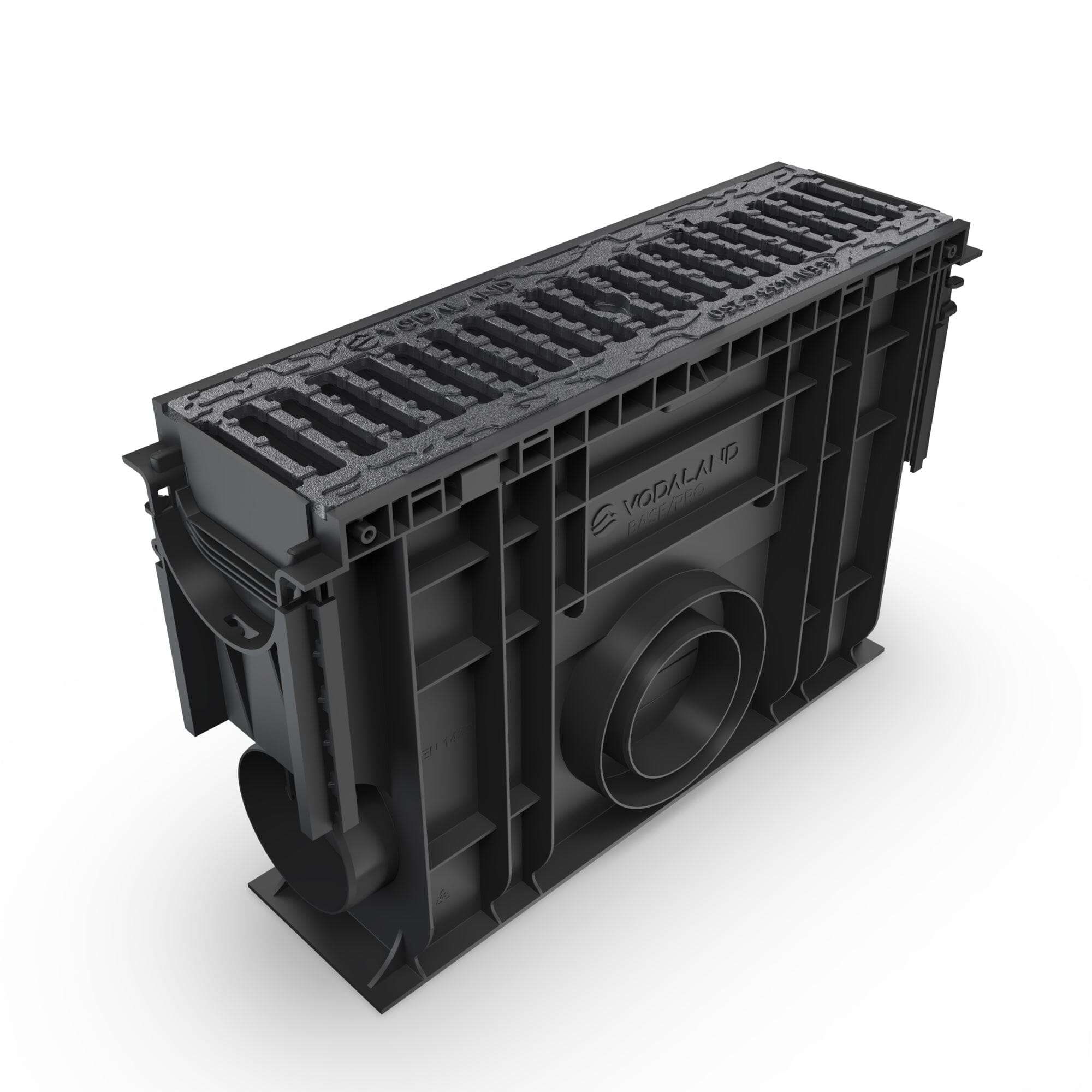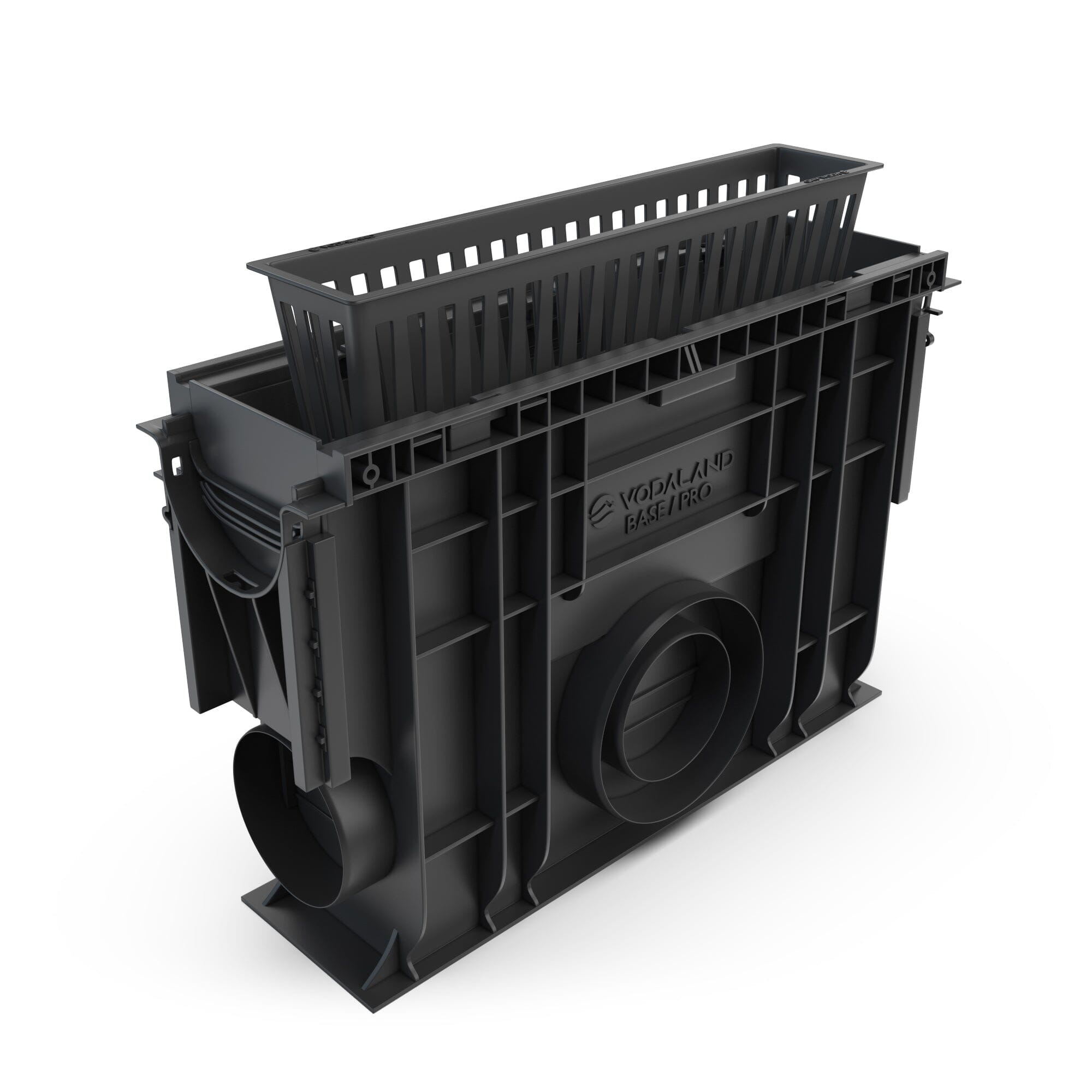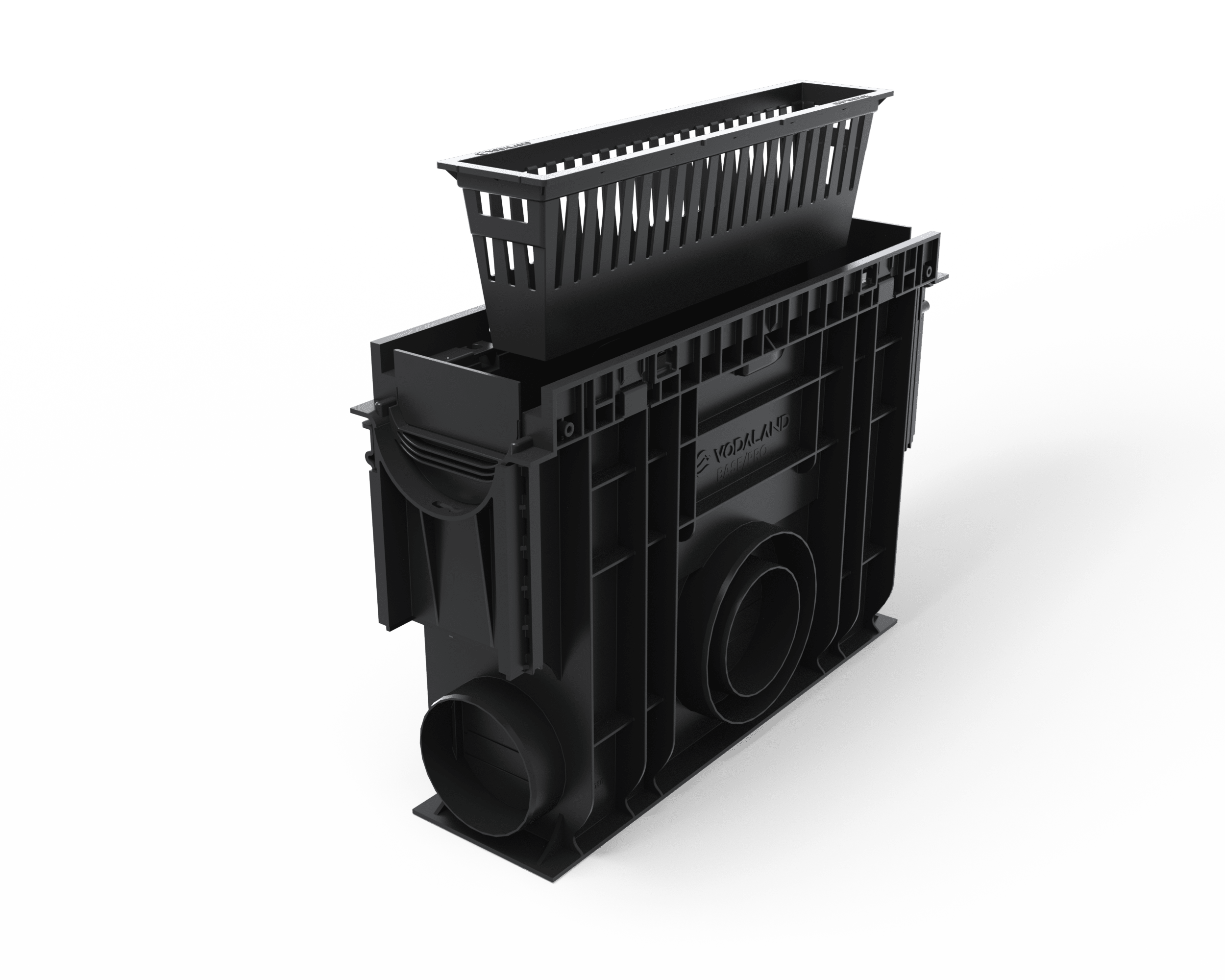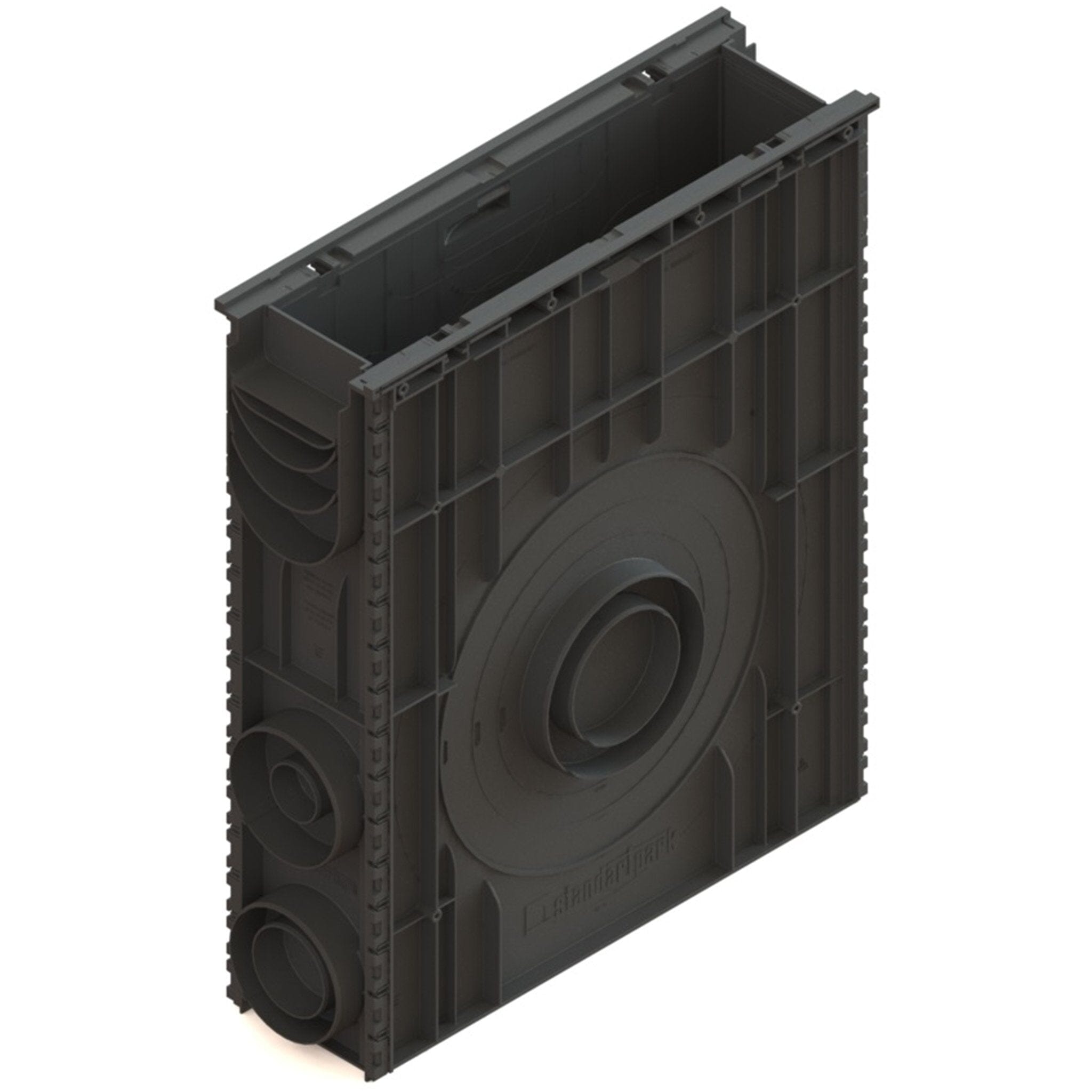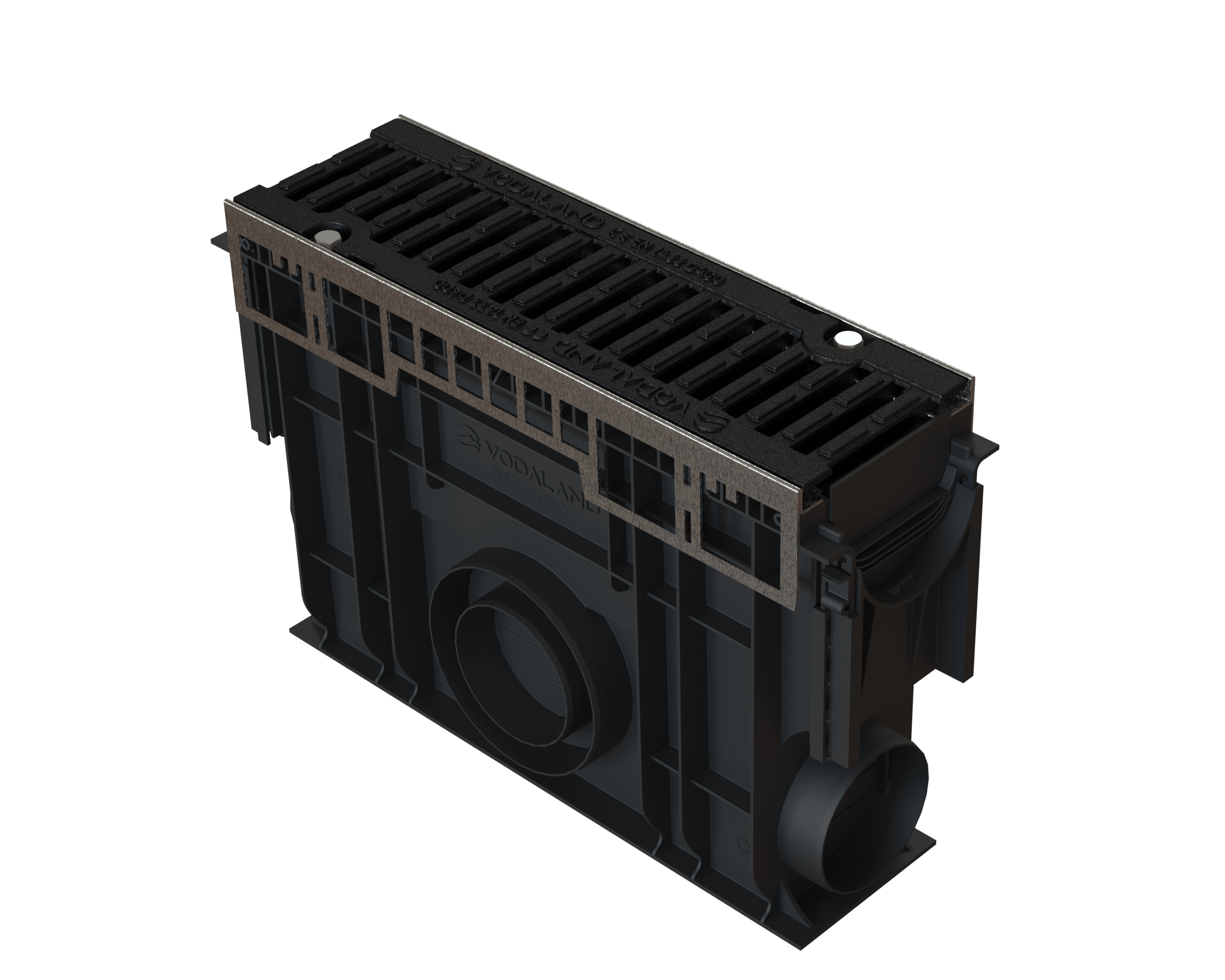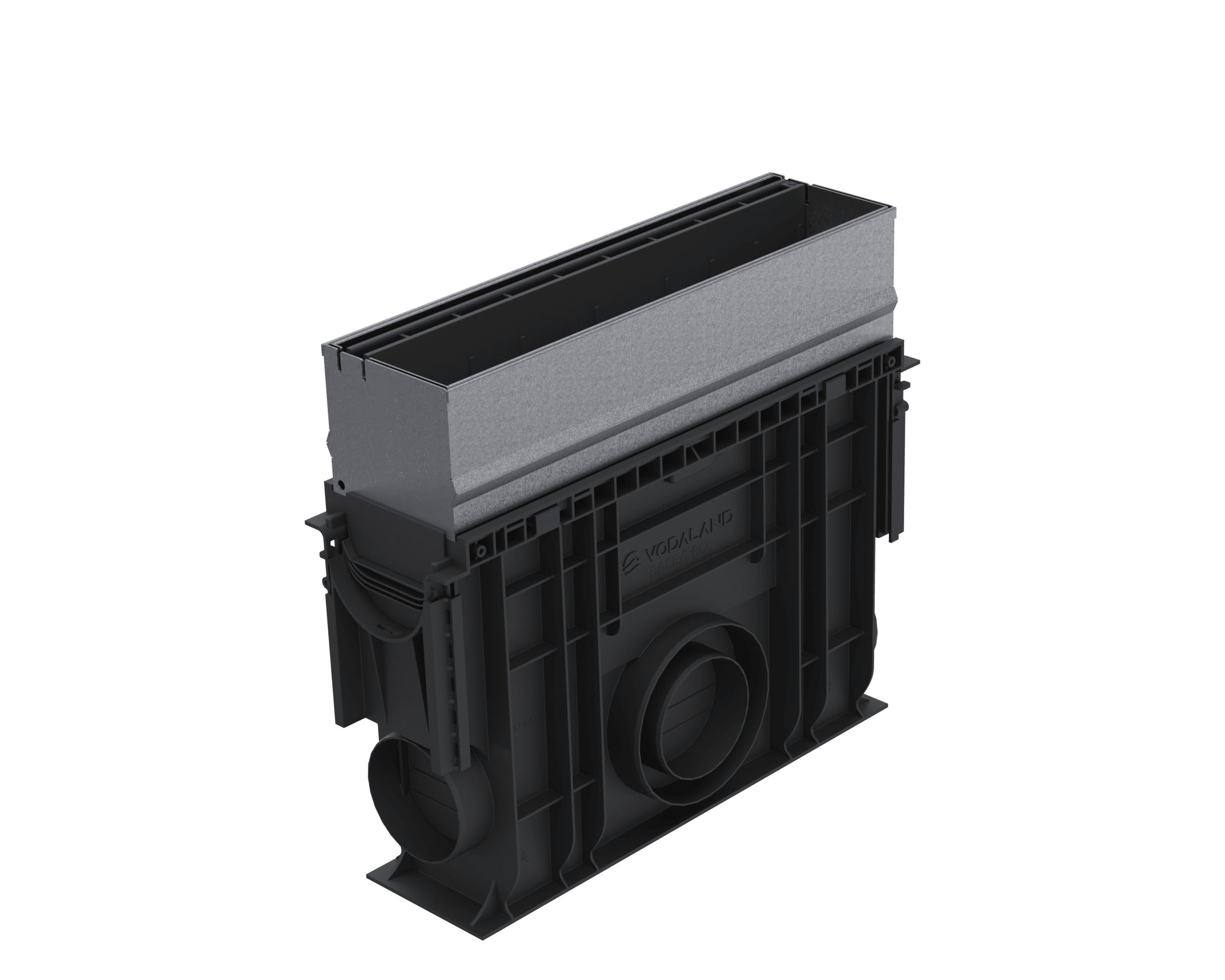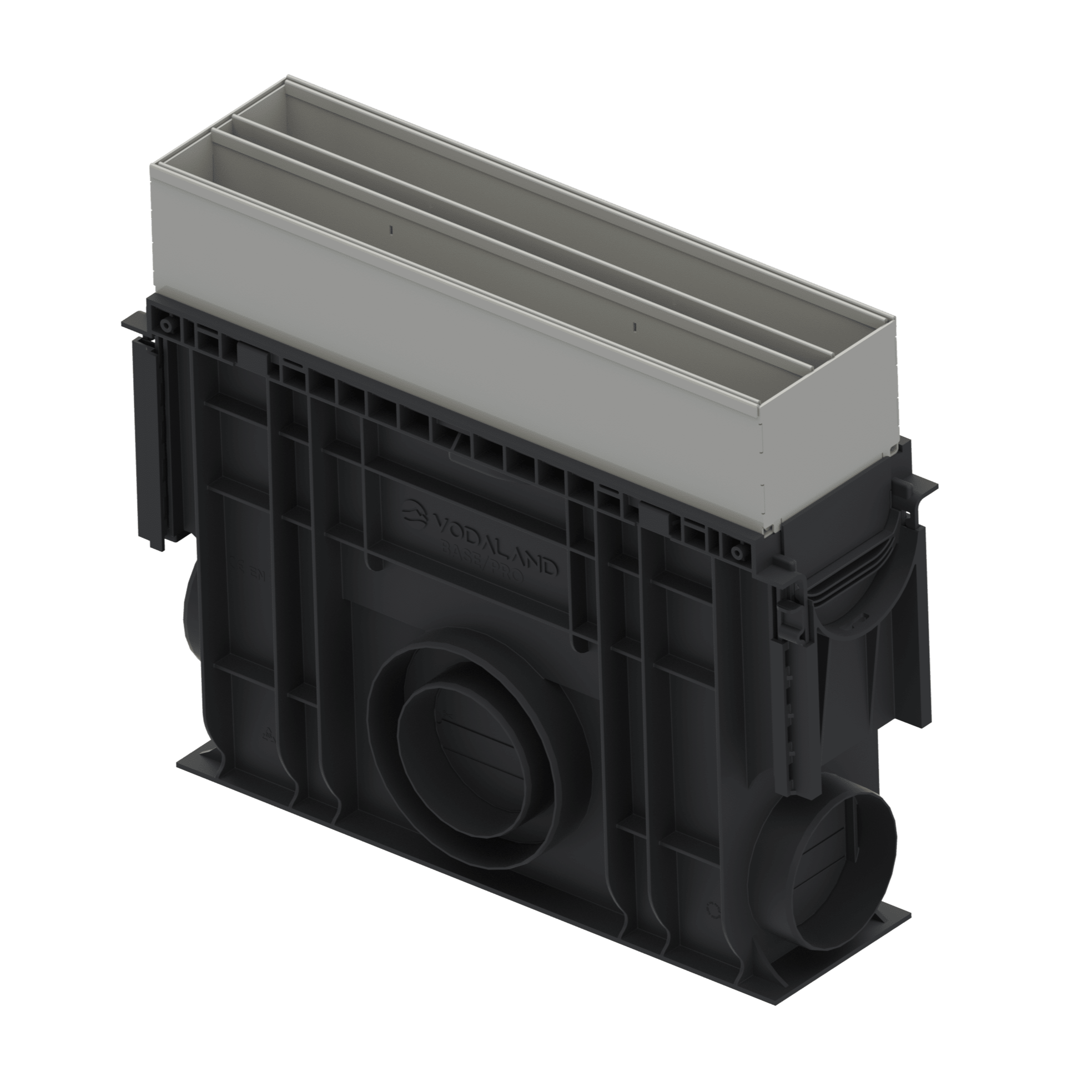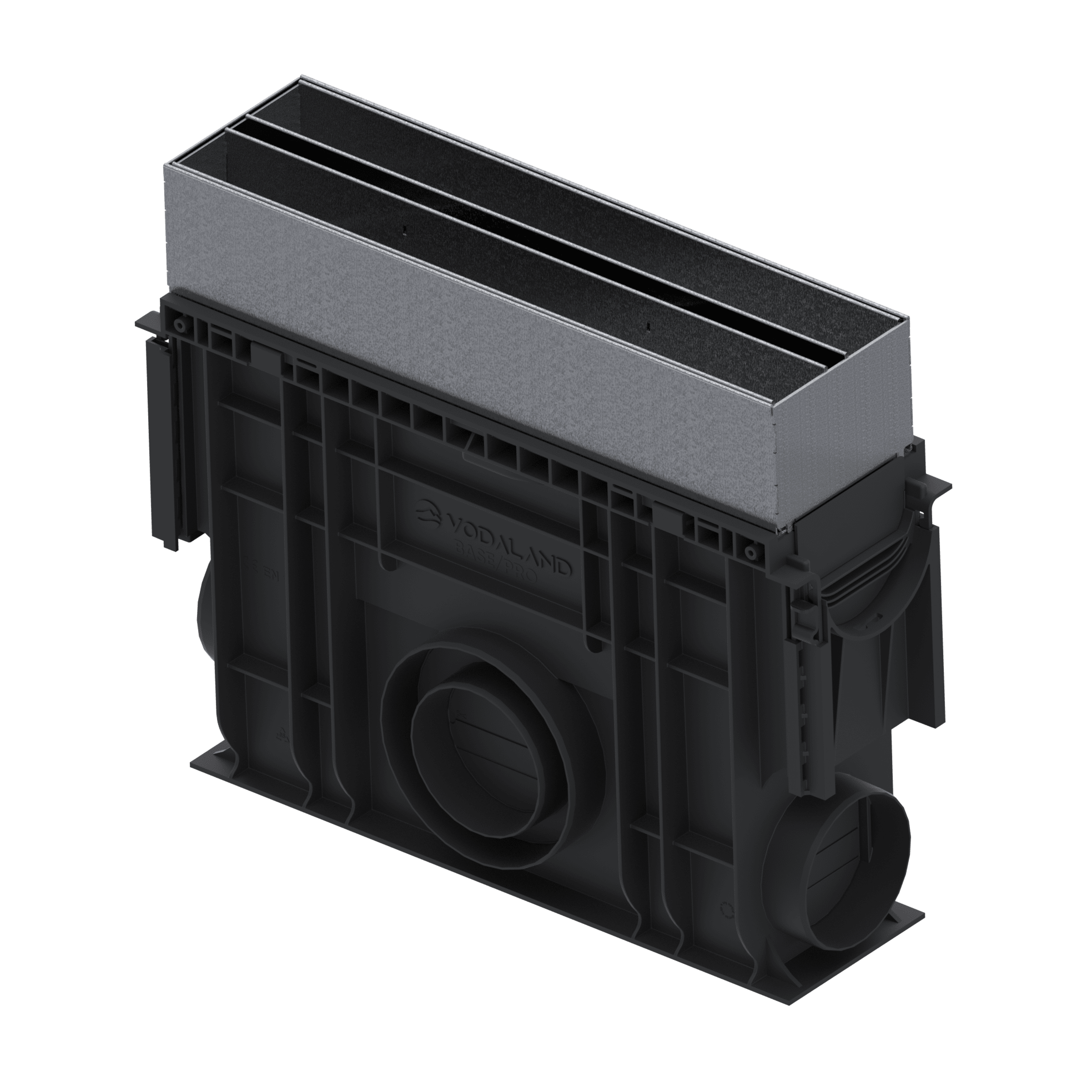
Sand trap for drainage
Our sand trap drainage products connect directly to our linear trench drain system. An inline sand trap is a great alternative to a catch basin, and it will have the same look and width as your channel system and will work as a part of your system
What is the difference between and inline sand trap and a catch basin?
There isn't a difference in purpose, since they function the exact same. The major difference between an inline sand trap and basin is the design and focus. The primary focus of an inline sand trap is to act as an end-point or middle-point for your trench drain line. The inline sand trap is meant to look the exact same as the rest of your trench drains once installed. The catch basin however is a square shape that focuses on standalone use.
Do the traps come with grates? What is included?
Some of our sand traps come with grates while some do not. The best way to identify if you are to receive a grate with your sand trap is through the product image. The slot sand trap, drive sand trap, and plastic grate sand trap come with a grate included. The remainder require you to buy a grate additionally for your sand trap.
Can I use any of the outlet options?
Yes, the great thing about our sand traps is that they are designed to allow outlet use from any of the cut-out options, no matter the situation. It is important however to identify where your piping would run from that outlet, and what may impede that piping.
Can this be used standalone?
While they are primarily designed for use with our trench drains or slot drains, the inline sand trap can be used standalone.
How do I install this?
This installs the same as any other trench drain would, and is compatible with our mounting bracket install method. Please be attentive to the additional depth needed to fit the sand trap. It is incredibly important to have the grate remain in the sand trap during installation
due to the possibility of the weight of the concrete warping the sand trap basin. It
is also important to use a brace to support the middle of the trap, since the depth makes
the middle especially vulnerable to warping.
Load Class A - Light duty, pedestrian foot traffic
Load Class B - Medium duty traffic, light vehicles, sidewalks and residential parking
Load Class C - Heavy duty traffic, buses, garages, general commercial applications
Load Class D - Heavy duty trucks, gas stations, forklifts, highways
Load Class E - Extra heavy duty, hard tire forklifts, industrial areas, storage terminals
Load Class F - Special duty, airport runways, structures with extreme loads
What are inline sand traps…
Our sand trap drainage products connect directly to our linear trench drain system. An inline sand trap is a great alternative to a catch basin, and it will have the same look and width as your channel system and will work as a part of your system. The sand trap can be placed anywhere you want within your run (in most cases, in the end or the middle of a line). All our sand trap drainage products offer easy cleaning and maintenance—they come with debris baskets for sediment removal and adapters to simply connect them with any depth of our basic channels. Sand traps also have multiple outlet connections available on all sides. This is really an all-in-one solution. Shop our inline sand traps now!
4" EASY Inline sand trap, plastic grate (black)
- Regular price
- From $55.00
- Regular price
-
- Sale price
- From $55.00
- Unit price
- /per
From $55.00
4" Plastic inline high-edge sand trap (BASE 100P-HE), plastic grate ADA, C class
- Regular price
- From $199.00
- Regular price
-
- Sale price
- From $199.00
- Unit price
- /per
From $199.00
4" Plastic inline sand trap (BASE 100P), galvanized grate, A class
- Regular price
- From $159.00
- Regular price
-
- Sale price
- From $159.00
- Unit price
- /per
From $159.00
4" Plastic inline sand trap (BASE 100P), stainless grate, A Class
- Regular price
- From $169.00
- Regular price
-
- Sale price
- From $169.00
- Unit price
- /per
From $169.00
4" Plastic inline sand trap (BASE 100P), stainless grate "mesh" Heel Proof, A Class
- Regular price
- From $219.00
- Regular price
-
- Sale price
- From $219.00
- Unit price
- /per
From $219.00
4" Plastic inline sand trap (BASE 100P), galvanized grate "perforated" ADA/Heel Proof, A Class
- Regular price
- From $169.00
- Regular price
-
- Sale price
- From $169.00
- Unit price
- /per
From $169.00
4" Plastic inline sand trap (BASE 100P), galvanized grate ADA/Heel Proof, A Class
- Regular price
- From $199.00
- Regular price
-
- Sale price
- From $199.00
- Unit price
- /per
From $199.00
4" Plastic inline sand trap (BASE 100P), stainless steel grate "perforated" ADA/Heelproof, A Class
- Regular price
- From $189.00
- Regular price
-
- Sale price
- From $189.00
- Unit price
- /per
From $189.00
4" Plastic inline high-edge sand trap (BASE 100P-HE), stainless square holes, B Class
- Regular price
- From $340.00
- Regular price
-
- Sale price
- From $340.00
- Unit price
- /per
From $340.00
4" Plastic inline sand trap (BASE 100P), stainless grate "double-slotted", B class
- Regular price
- From $289.00
- Regular price
-
- Sale price
- From $289.00
- Unit price
- /per
From $289.00
4" Plastic inline sand trap (BASE 100P), stainless grate "No-Slip", B class
- Regular price
- From $339.00
- Regular price
-
- Sale price
- From $339.00
- Unit price
- /per
From $339.00
4" Plastic inline sand trap (BASE 100P), stainless grate ADA, B class
- Regular price
- From $265.00
- Regular price
-
- Sale price
- From $265.00
- Unit price
- /per
From $265.00
4" Plastic inline sand trap (BASE 100P), galvanized grate ADA, B class
- Regular price
- From $239.00
- Regular price
-
- Sale price
- From $239.00
- Unit price
- /per
From $239.00
4" Plastic inline high-edge sand trap (BASE 100P-HE), stainless round holes, C Class
- Regular price
- From $420.00
- Regular price
-
- Sale price
- From $420.00
- Unit price
- /per
From $420.00
4" Plastic inline sand trap (BASE 100P), cast iron grate ADA/Heelproof, C class
- Regular price
- From $169.00
- Regular price
-
- Sale price
- From $169.00
- Unit price
- /per
From $169.00
Backorder
4" Plastic inline sand trap (BASE 100P), cast iron grate "terrain", C class
- Regular price
- From $159.00
- Regular price
-
- Sale price
- From $159.00
- Unit price
- /per
From $159.00
4" Plastic inline sand trap (BASE 100P), 14" depth
- Regular price
- From $159.00
- Regular price
-
- Sale price
- From $159.00
- Unit price
- /per
From $159.00
4" Plastic inline high-edge sand trap (BASE 100P) (15" depth)
- Regular price
- From $159.00
- Regular price
-
- Sale price
- From $159.00
- Unit price
- /per
From $159.00
4" Plastic inline sand trap (BASE 100P), 24" depth
- Regular price
- From $289.00
- Regular price
-
- Sale price
- From $289.00
- Unit price
- /per
From $289.00
4" Plastic inline sand trap (PRO 100P), D Class
- Regular price
- From $240.00
- Regular price
-
- Sale price
- From $240.00
- Unit price
- /per
From $240.00
SLOT drain plastic clean-out system
- Regular price
- From $275.00
- Regular price
-
- Sale price
- From $275.00
- Unit price
- /per
From $275.00
SLOT drain stainless clean-out system
- Regular price
- from $402.00
- Regular price
-
- Sale price
- from $402.00
- Unit price
- /per
From $402.00
SLOT drain galvanized clean-out system
- Regular price
- from $248.00
- Regular price
-
- Sale price
- from $248.00
- Unit price
- /per
From $248.00
Call for more information or to place an order!
Our customer service squad and sales team are always here to help.
(905) 238-1771


